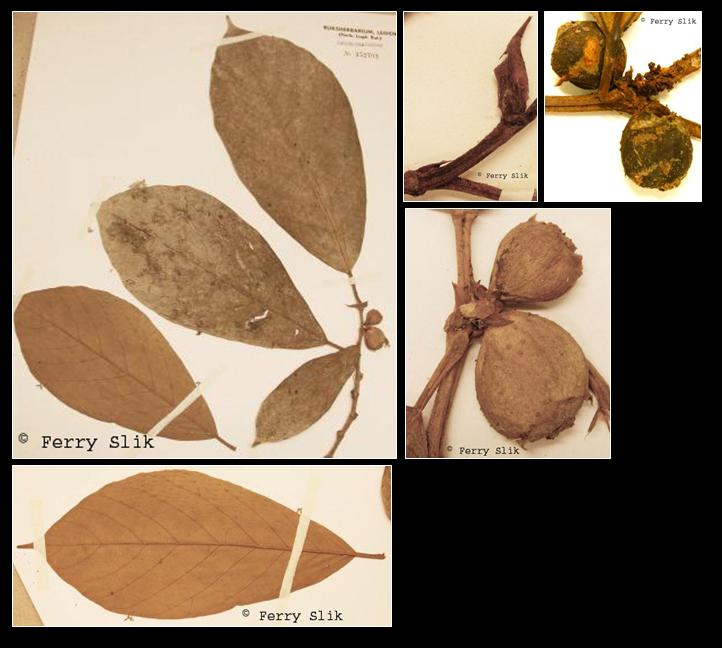Ficus lepicarpa Blume, Bijdr. (1825)
Latin for 'scaly fruits'.Synonyms
Covellia didyma Miq.
Covellia lepicarpa (Blume) Miq.
Covellia volkameriifolia Wall. ex Miq.
Ficus lepicarpa var. brevibracteata Corner
Ficus lepicarpa var. pedunculata Corner
Ficus lepicarpa var. suluensis Corner
Ficus lepicarpa var. bunjeng Solms
Ficus malaica Hunter ex Ridl.
Ficus volkameriifolia (Wall. ex Miq.) Miq.
Diagnostics
Understorey tree up to 14 m tall and 25 cm dbh. Stem with white sap.
Stipules ca. 19 mm long, glabrous. Leaves alternate, simple, penni- to tripli-veined,
glabrous, margin toothed. Fruits ca. 14 mm diameter, yellow-brown, globose figs,
placed along the twigs.
Description
Dioecious tree, up to 14 m tall, 25 cm diameter, without free hanging aerial roots; buttresses
short. Bark greyish brown. Twigs c. 0.4 cm thick, grey-brown, angled, with prominent
grooves. Stipules lanceolate, acute, 1-2 cm long, persistent on twig ends. Leaves spirally
arranged, thin-coriaceous, glabrous on both surfaces; oblanceolate, 9-25 x 3-11.5 cm,
base symmetric, cuneate, margin entire, plane, apex acute; midrib raised above, rounded
below; lateral veins 8-10 pairs, well-spaced, curved, departing from the midrib at a broad
angle, raised below, faint above, basal pair distinct, without axillary glands; intercostal
venation scalariform, visible below, faint above; petiole 1.5-5 cm long. Syconia axillary,
sessile, ripening pale yellow to brownish, obovoid to subglobose, 1.2-1.5 x 1-1.2 cm;
basal bracts 3, 4-13 mm long, lateral bracts present; internal bristles absent. Tepals
fused into tubular perianth. Achenes c. 1 mm long, tuberculate, rough, keeled. [from Tree
Flora of Sabah and Sarawak]
Ecology
In undisturbed to disturbed (open) mixed dipterocarp to sub-montane forests
up to 1700 m altitude. Usually growing along rivers and streams with sandy to
clay soils, but also on limestone.
Uses
The fruits are edible. Young shoots are eaten raw as a vegetable.
Distribution
From Burma to the Moluccas.
Local names
Borneo: Engeruoh, Engkusuroh (Iban), Kara (Iban), Krerungan, Sengkoak.
English: Saraca fig.
Indonesia: iyubyub etem (Javanese), buku-buku (Sumatra).
Malaysia: kelupang gajah.
Philippines: sulu-talobog (Bisaya).
Thailand: chalukpho (Nakhon Si Thammarat).
